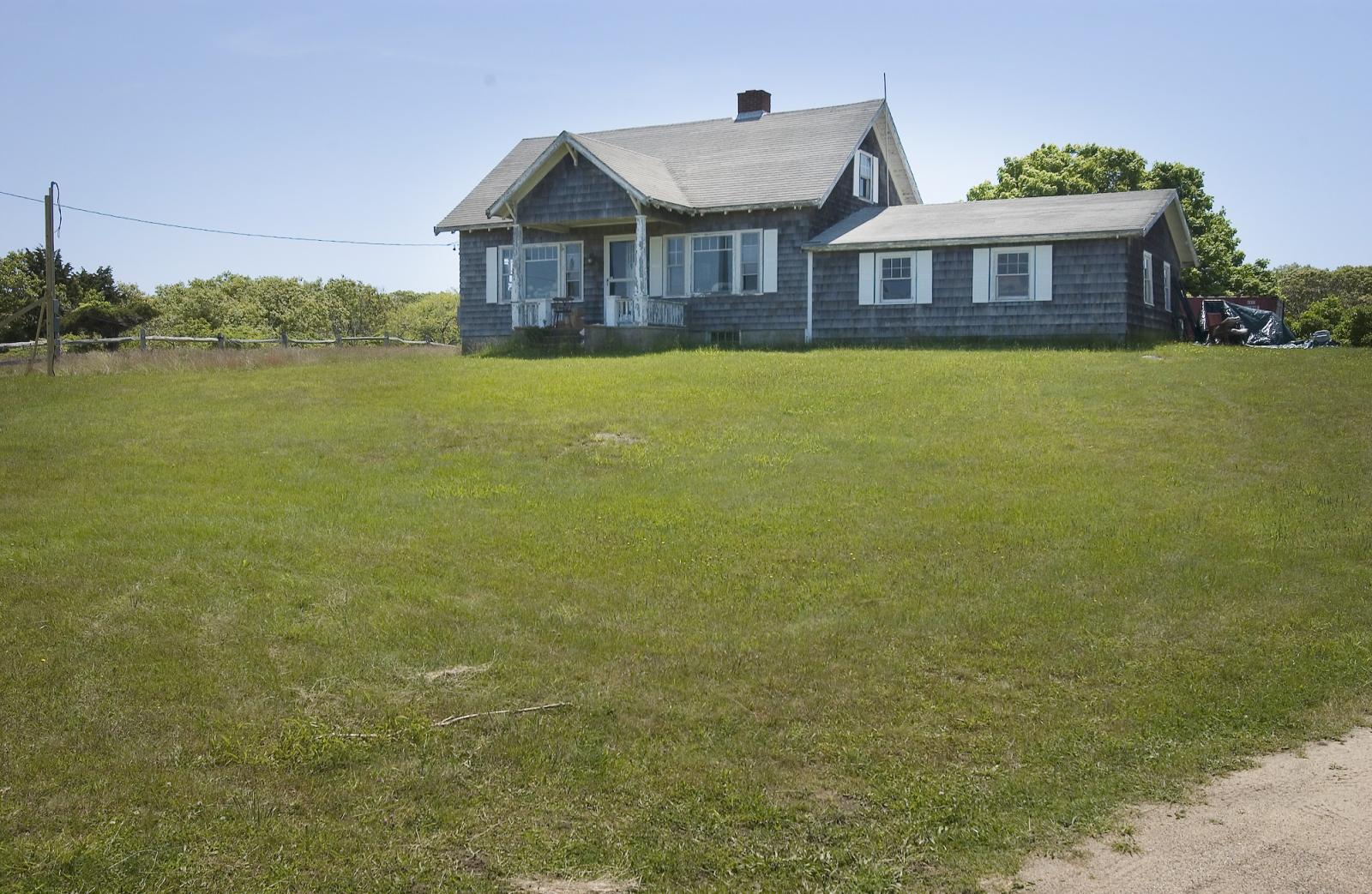An old house came down in Aquinnah this week, and with it six generations of family history and more memories than anyone could count.
But this is not a trophy house story. The Manning family homestead was razed to make way for two new modest homes that will house the three Manning sisters: June, Judith and Jyl, and their families.
Situated on Lighthouse Road, the property has a clear view of the turning sea at Vineyard Sound and the Elizabeth Islands beyond. The three-bedroom modest dwelling that was torn down was first built in 1927, paid for through the earnings of a Gay Head-born fisherman.
Walter Manning built the house with the help of a New Bedford builder. Far from extravagant, sited on 15 acres of good soil, it was built the way Gay Headers built their houses on the old rural road — simply.
Walter and his wife Ada Smalley Manning lived in the house, raised a son, James W. Manning, and were blessed with three bright young granddaughters who could fill the yard and house with play and love.
From the windows of the old house, the Mannings often looked out and watched not only the activities on Vineyard Sound but also Jack Belain, who would walk his oxen up the hill, well into the 1950s.
Captain Manning mowed his lawn with a push mower.
Besides being a force at sea, he was a small town politician, having served several roles in Gay Head government, including as selectman.
Over the years lots were sold off and the Manning house today sits on an acre and a half of land.
On Sunday afternoon last week the rooms still smelled of old plaster, though most of the interior walls on the first floor had been replaced with wood paneling after an electrical fire in the dead of winter in 1967 caused extensive damage inside.
On the afternoon of the fire, Captain Manning and his wife were not home. Through the quick action of a rural carrier, a bedridden elderly Anna Smalley, Mrs. Manning’s mother, was safely removed from the house and firefighters were notified. Chilmark and Gay Head firefighters fought the stubborn fire for a long time, and it is believed a good measure of luck and no wind kept the house from being fully destroyed.
A black and white photograph on the living room wall on Sunday offered another story unrelated to the fire. It is a picture of the captain’s favorite fishing dragger, Bozo. Though he had owned others, Bozo was his most prized vessel. Bought in 1942, the 48-foot boat for many years was used for swordfishing in the summer and dragging in winter. Three generations of Mannings worked on the Bozo. The photograph was taken during a swordfishing trip; a dory is being pulled from behind.
In his day, the captain didn’t have to go far to get one of the most revered pelagic fish of the sea. He often only had to go near Noman’s Land, although he did go farther. In 1952, he harpooned and landed a 706-pound swordfish (dressed weight), caught on the northern edge of George’s Bank.
Over the smoke-stained mantel was another photograph, a fading aerial shot of the Gay Head Cliffs when the clay in the eroding soil was far more colorful than it is now.
The house had seen better days. Eighty-two Augusts and as many bitter cold Januaries, not to mention a few hurricanes, had taken a toll on the original shingles. Much of the white paint on the wood trim had peeled away.
Much like old wooden fishing boats, some houses do not last forever.
Three days later driving along Lighthouse Road, one could see that the house had disappeared, taken down by a large steel crane.
It looked as if the house simply had been airbrushed out of the scene. The lawn was still lush and unmowed and the steps to the front door were still in place. An old friend had left the neighborhood.
The future is still bright, though. The three Manning sisters will live here, and for them it is the only way to move forward without leaving the memories far behind.





Comments (1)
Comments
Comment policy »